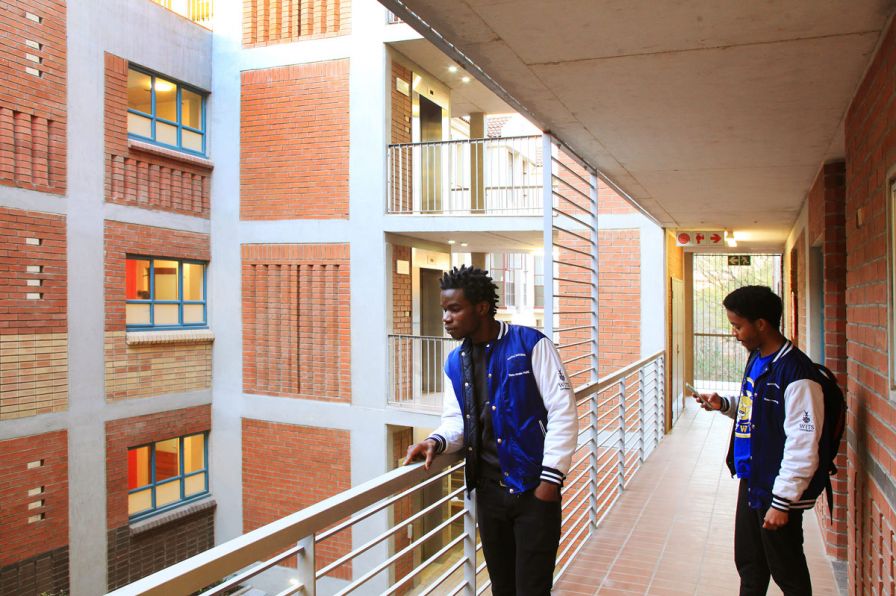“Chessboard” masonry accommodates students with style
This innovative architectural project at the University of the Witwatersrand has delivered affordable and sustainable student accommodation with style.
With a national student accommodation shortfall of 250 000 beds (according to the Department of Higher Education) developers need to think creatively. The Barnato extension at Wits University was delivered for 30% less than a new-build. Phase 1 was completed in 2019 and Phase 2 in 2020.
Celebrating diversity
The “chessboard” of brick colours and textures celebrates diversity and the unique creativity that emerges under constraint.
To keep within the strict budget, the architect used end-of-range luxury bricks interwoven with inexpensive, standard masonry “commons”. The patterning and 3D effects of the exposed brick integrate the new extensions with the existing building.
Clay brick is tough and low maintenance, and will outlast even the rowdiest student parties!
This extension has open walkways and scaled courtyards to provide airy and bright social spaces. There are views into the existing garden with a water feature providing natural white noise.
Building for sustainability
“Clay bricks are the obvious choice for student residences,” says Mariana Lamont, executive director of the Clay Brick Association of Southern Africa.
“With its ability to regulate noise, air humidity and temperature, clay brick masonry maintains a comfortable interior through the hot, rainy summer months, or freezing Highveld nights,” she explains.
“This thermal efficiency reduces the need for heating and air-conditioning, with savings for the student and fewer dangerous appliances that can be left on!”
Building for maintainability
The density and mass of clay brick provides a resilient protective barrier with a maximum fire ratings.
Exposed brick requires little or no maintenance over decades - bricks don’t rot, tarnish, puncture, fade, rust, scuff, peel or erode. Clay bricks are also resistant to damage from borer and termites, moulds and fungi, insects and rodents.
Paved patios and courtyards with practical built-in brick seating are cheaper to maintain than a garden and students love having a place to entertain.
Thorsten Deckler of 26’10 South Architects describes the planning that went into brick choices.
“We used robust chamfered bricks on exposed corners which will withstand the wear-and-tear of students moving in and out of flats with luggage and furniture.
“We also used darker bricks on the plinth and high-traffic areas where buildings become quite dirty over time. Light coloured bricks were used instead of signage to indicate what floor you are on,” says Deckler.
“Corobrik offered a variety of face brick colours and textures, pavers and special shapes and that gave us a wide choice to implement the chessboard design,” he concludes.
Caption: Barnato Hall at the University of the Witwatersrand in Johannesburg. Photographs courtesy of Corobrik.










